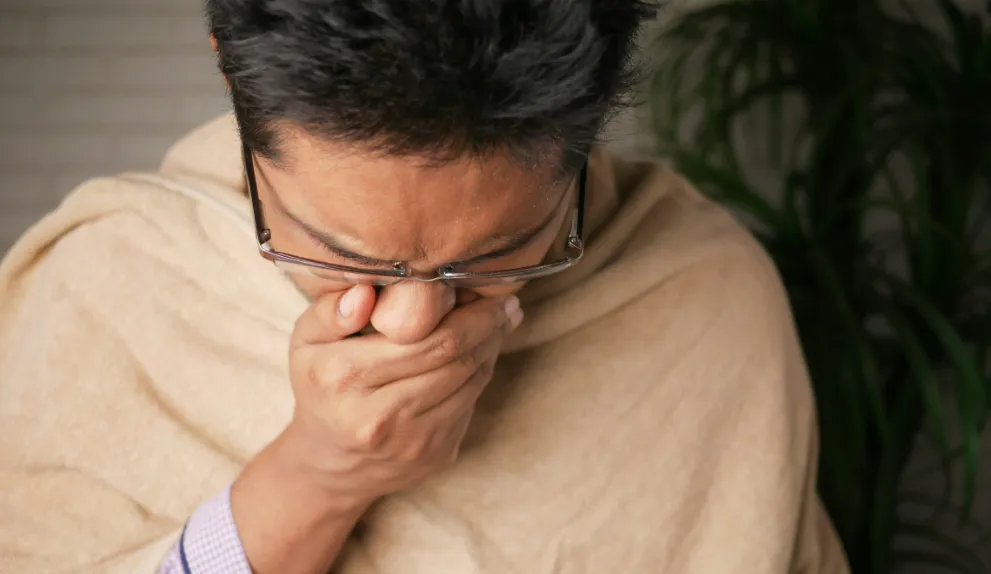The winter season is here again. These months are characterized by later sunrises, earlier sunsets, and cloudiness, reducing sunlight exposure. You might commute to and from work in the dark after spending the entire day indoors. At times, you may not see the sun for several days. As a result, you might develop winter blues or seasonal depression. Read on to learn more.
Are winter blues the same as seasonal depression?
No. Winter blues are not the same as seasonal depression. Winter blues describe the sadness and fatigue that are typical of the winter months. They can make you feel reluctant to get out of bed and less inspired to finish activities. Winter blues are not a mental health condition, only last a short while, and don't affect your ability to go about your daily life.
Seasonal depression, also known as seasonal affective disorder (SAD), is a mental health condition characterized by severe and overwhelming feelings of sadness that affect daily routine. It is a clinical illness that is listed in The Diagnostic Manual of Mental Disorders (DSM-5). Unlike winter blues, it is not necessarily limited to the winter months. According to the DSM-5, SAD is a type of major depressive disorder (MDD) with a seasonal pattern. It typically manifests in the fall, peaks in the winter, and goes away in the spring.
Fast facts about seasonal depression:
Did you know that seasonal depression:
- can occur in the summer months; it is not limited to winter months like winter blues
- affects about 5% of Americans
- is four times more prevalent in women than men
- rarely affects people younger than 20 years
- decreases in incident rate as the individual ages
- requires hospitalization for 6% of people affected
Are the symptoms of winter blues and seasonal depression the same?
Symptoms of winter blues include:
- feeling sadness during winter
- lack of motivation to complete some tasks
- trouble sleeping
- staying in bed longer than usual
Symptoms of seasonal depression include:
- overeating
- craving foods that contain complex carbohydrates
- weight gain
- difficulty sleeping
- depression for most of the day
- lack of interest in activities you once enjoyed
- withdrawal from loved ones
- fatigue
- suicidal thoughts
How is SAD diagnosed?
A diagnosis of seasonal depression is issued after two consecutive occurrences of depression around the same time every year, without symptoms during other times of the year. Also, the symptoms must interfere with your daily activities.
What are the causes of seasonal depression?
The major factors of seasonal depression are:
- circadian rhythm: decreases in daily sunshine exposure for an extended period might alter your circadian rhythm, which can cause your body to misinterpret the time of day and make you feel tired.
- serotonin: brain imaging shows that people with seasonal depression have low levels of serotonin. Serotonin is a chemical in the brain that regulates mood.
- melatonin: melatonin is a hormone that promotes sleep and has an impact on circadian rhythm. Because it is triggered by darkness, it is created more frequently when the days are shorter and darker, which makes people feel tired during the day.
- vitamin D: since the body produces vitamin D as a result of exposure to sunlight, your levels of vitamin D are significantly lower in the winter. You may experience depression if your vitamin D levels are low because it is believed to play a role in the regulation of serotonin.
How can I beat the winter blues?
Lifestyle modifications remain effective options to manage winter blues:
- increase exposure to sunlight: sunlight is an unlimited source of vitamin D, crucial to regulating circadian rhythm. If winter is characterized by snow, rain, and cloudiness in your area, consider traveling to a sunny region.
- adopt a regular sleep/wake pattern: make it a habit to go to bed at the same time every night and get out of bed at the same time every morning. This habit can reset your circadian rhythm and improve your symptoms.
- exercise regularly: exercise releases endorphins – chemicals that improve mood and energy. 30 minutes of exercise a day, five days a week can improve your mood.
- eat a balanced diet: eat well and stay healthy. Consider foods rich in vitamin D such as egg yolks, mushrooms, etc.
- take a vitamin D supplement: since your body can’t make enough vitamin D from sunlight during the winter months, consider a vitamin D supplement. It can improve your symptoms.
- spend time with friends: forming and maintaining a healthy social network improves symptoms of winter blues.
How is seasonal depression treated?
Various treatment approaches to SAD are:
- antidepressants: selective serotonin reuptake inhibitors (SSRIs) are the first-choice antidepressants approved for the treatment of SAD. Examples of SSRIs are citalopram (Celexa), fluoxetine (Prozac), sertraline (Zoloft), and paroxetine (Paxil). The second line antidepressant approved for SAD is bupropion (Forfivo).
- phototherapy: exposure to UV light is preferred for an individual with SAD. Light therapy and melatonin have been shown to improve the symptoms of SAD.
- dawn regulator: this is an alarm that progressively increases light intensity for 30 to 60 minutes in the early morning instead of giving off a loud noise. It is comparable to a lightbox in the management of SAD.
- Lifestyle modifications: lifestyle modifications are only used in conjunction with other treatment options for the treatment of SAD.
You can save up to 88% on your medications using the RxLess savings card. Our free card is accepted at all the major pharmacies, including Walgreens, CVS, and Rite Aid. Simply use the RxLess search tool to find your prescription medications, choose a pharmacy, and download or print a copy of your discount card. Show the card to the pharmacist and save instantly.

















